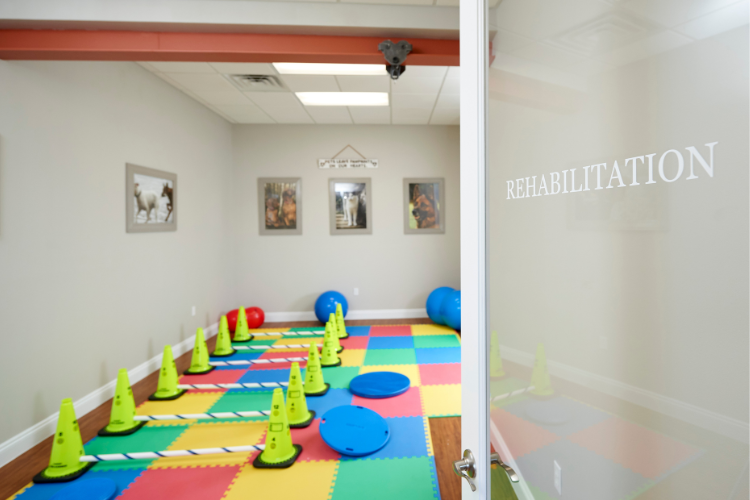What Case Studies Can Teach Us About the Small Stuff That’s Actually Huge
You’ve got a patient who’s finally stable. The barking stopped. The aggression is manageable. Everyone’s sleeping through the night. Then—bam—the behavior comes back. Same dose. Same diagnosis. So, what changed?
Sometimes, the little things can translate to significant changes in patient outcomes. A 15% difference in bioavailability. A pet parent doubling a dose on their own. A switch from one generic brand to another. These seemingly small shifts can be the difference between a patient living a peaceful life and being rehomed due to aggressive behavior.
In my new webinar, I use real cases to illustrate how behavioral medications function in the real world—and how generics versus brand names, inactive ingredients, and pharmacokinetics (PK) can transform success into setbacks and back again.
If you’ve ever wondered:
- Why one version of fluoxetine works like magic… and another makes things worse
- How a seemingly minor med switch triggered a patient’s relapse into aggression
- Whether generic and brand name bioequivalence means that the medications work the same way and do the same thing at the same dose
- Or what to do when a pet parent wants to switch to “the same thing, but cheaper”…
Below, you’ll find previews of four different case studies which will be reviewed in greater detail throughout the course of the webinar.
Case Study 1: Eddy
Meet Eddy, a 24 kg Husky mix. Eddy had one job: chill out when left alone. With the right medication, he did just that—until something changed. His anxiety crept back, along with aggression, restlessness, and fear of everyday things. He couldn’t concentrate, started showing aggression toward other dogs, and playtime became nonexistent.Same dose. Same drug. Or was it?
Could the difference between a generic and an FDA-approved veterinary brand explain it all?
And if so—how do we explain that to clients in a way that doesn’t sound like a sales pitch?
Case Study 2: Butters
Meet Butters, an 18 kg mixed-breed dog. Butters was a complex cocktail of isolation anxiety, cat-directed aggression, and family chaos. With behavioral meds and environmental management, progress was slow but steady—until a medication change sent the case spiraling.Did the new med cause the regression, or was it a coincidence?
Could the switch from an approved veterinary brand to generic fluoxetine be to blame?
And how do you make decisions when a pet’s future in the home is on the line?
I will walk you through the timeline and critical decision points in this emotional case.
When is aggression in bed not just a “training problem”? When it appears suddenly after months of stability.
Case Study 3: Pinky
At just 8 months old, Pinky was already overwhelmed by the world—scared of new people, unable to settle, baring her teeth even at familiar faces. The young, anxious Golden Retriever made steady gains on a combination of medications and behavior modification. However, when the pet parent adjusted the dose and the family vet added a new medication, things took a sharp turn.What caused the backslide—and how can you prevent it from happening in your cases?
This case is a masterclass in communication, client education, and the importance of dose discipline.
Case Study 4: Gus
Gus, a 46 kg Bouvier des Flandres, had been thriving on venlafaxine for over a year—until one day he wasn’t. He became anxious, hypervigilant, started gulping air and eating grass. The culprit?Hint: Check the pharmacy label.
This case sheds light on a topic that many clinicians overlook: the variation in generic products between manufacturers. The patient was still on “venlafaxine”—but not the same venlafaxine.
How much can inactive ingredients really affect behavioral outcomes?
What brand details should you be tracking?
And how do you navigate this when human pharmacies supply the meds?
What the labels don’t tell you.
Throughout the webinar, I will also clarify the often-misunderstood concept of bioequivalence. Just because a drug is deemed “equivalent” doesn’t mean it works the same in every patient or even has the same effect in the same patient when switching brands.Did you know:
- Bioequivalence only requires that generics fall within 80–125% of the reference product’s mean AUC and Cmax?
- No therapeutic trials are required to prove that a generic actually works the same way in a real patient?
- Inactive ingredients—like binders, fillers, and dyes—can trigger very real adverse effects?
You’ll Learn:
- When you should insist on an FDA-approved veterinary formulation
- How to discuss switching from a brand to a generic product with pet parents without sounding alarmist?
- What to do when a stable patient suddenly regresses—and there’s “no obvious reason”?
- Why might compounded or human-labeled medications fail in behavior cases?
- And how pharmacokinetics (PK) can guide smarter, safer prescribing.
Click here or keep scrolling to watch this free webinar!
Share
Related blogs

The 8 Dimensions of Wellness
According to Dr. Heidi L. Hulon, there are 8 dimensions of wellness that make each of us whole and fulfilled. Focusing on these elements of wellbeing will help you lead a happy and healthy life.

Marketing is All the Same, Right? Nope. 2 Ways to See the Differences
Just as your services are not the same as your competitors, all marketing is not the same. Kelly Baltzell shares how to find tailored marketing solutions that will increase your revenue and bring more tails in the door.

Physical Rehabilitation Therapy and the Role Owners Play with Supplementation
RVTs Lauryn Harker and Tiffany Downing of Canine Rehabilitation of Orange County share 3 illuminating case studies which illustrate that the combination of customized Physical Rehabilitation Therapy, supplements, and diet can mean all the difference in patients outcomes and overall quality of life.
